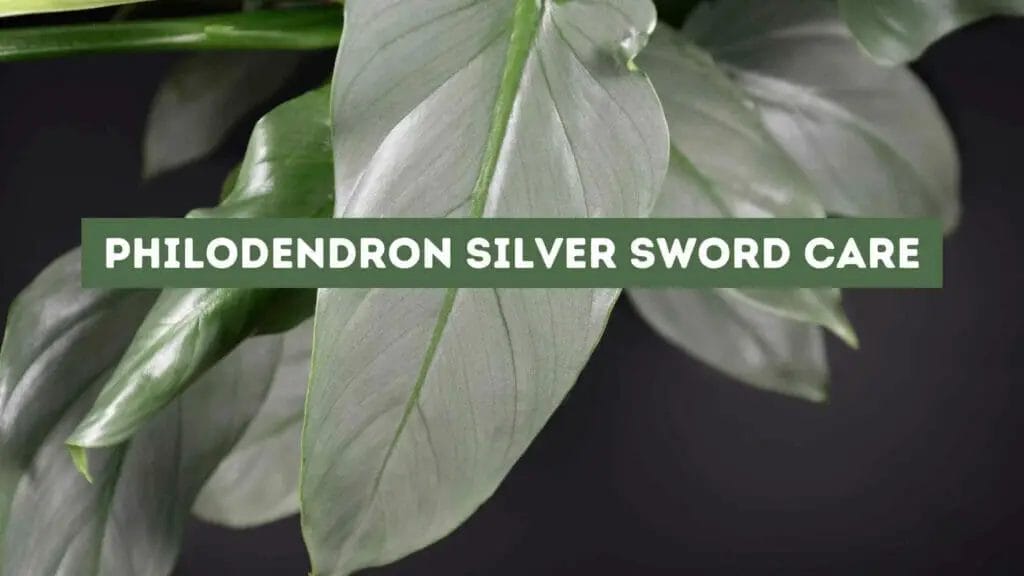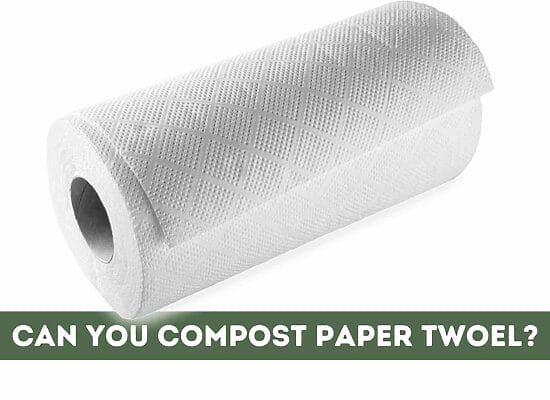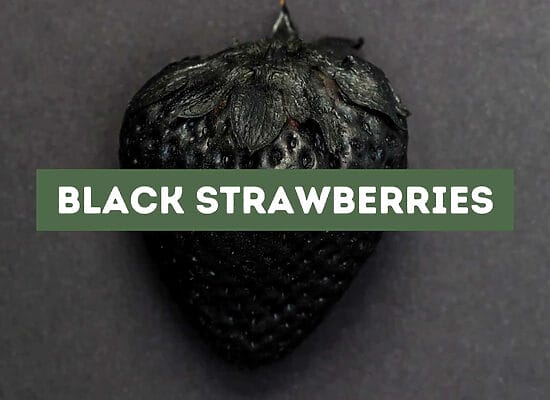
Philodendron Silver Sword, also known as Philodendron hastatum, is a visually striking tropical plant that stands out in any indoor space. With its elongated, silvery-green leaves and relatively easy-care requirements, it can bring an exotic touch to your home or office.
In this article, we will provide you with the best Philodendron silver sword care tips and how to maintain and ensure it stays healthy and thrives under your watchful eye.
Key takeaways:
- Philodendron Silver Sword, also known as Philodendron hastatum, is a visually striking tropical plant with silvery-green leaves.
- It is easy to care for and adapts well to various indoor conditions.
- Provide adequate light, maintain temperatures between 65°F and 80°F (18°C-27°C), and keep humidity at 50% or higher for optimal growth.
- Choose well-draining soil with peat and perlite and use a pot with drainage holes to prevent overwatering and root rot.
- Place the plant in bright, indirect light near a window with filtered sunlight.
- Water the plant when the top inch of soil is dry, avoiding overwatering.
- Feed the plant with balanced liquid houseplant fertilizer every 4-6 weeks during the growing season.
- Prune leggy vines and remove yellow or damaged leaves occasionally.
- Propagate the plant using stem cuttings or aerial roots.
- Common problems include pests, fungal diseases, yellow leaves from overwatering or underwatering, and drooping from suboptimal environmental conditions.
- Take safety precautions as the plant is toxic if ingested and can cause skin irritation.
Keeping these tips in mind will set you on the right path to cultivating a stunning Philodendron Silver Sword and becoming the envy of your fellow plant enthusiasts.
Is Philodendron Silver Sword Hard to Care For?
Great news for plant enthusiasts: Philodendron Silver Sword is surprisingly easy to care for! This stunning tropical plant adapts well to indoor conditions and doesn’t require loads of attention to thrive.
Location and Light: First things first, let’s talk about the perfect spot for your Silver Sword. These beauties are fond of bright, indirect light. Place your plant near a window with filtered sunlight, but make sure to keep it out of direct sun to avoid leaf damage.
Watering and Soil: Consistent watering is key. Keep the soil moderately moist by allowing the top inch to dry out before watering again. To help you along, use a well-draining potting mix that retains some moisture without getting soggy. Remember, overwatering your plant could lead to yellow leaves.
Temperature and Humidity: Being a tropical delight, Philodendron Silver Sword appreciates a warm and humid environment. Aim to maintain a temperature range between 65-80°F (18-27°C) for optimal growth. To raise humidity, try placing a tray of water with pebbles near your plant, or simply invest in a humidifier.
Feeding and Pruning: Regular feeding will keep your Silver Sword happy. Use a balanced liquid houseplant fertilizer every 4-6 weeks during the growing season (spring to early fall). As for pruning, it’s best to trim back any leggy vines and remove yellow or damaged leaves occasionally.
Quick Tip: Philodendron Silver Sword loves to climb! Encourage upward growth by providing a support like a moss pole or a trellis to help it flourish vertically.
Philodendron Silver Sword Overview
Origins and Characteristics
Welcome to the world of the Philodendron Silver Sword (Philodendron hastatum), a stunning and relatively rare indoor plant that brings a touch of the rainforest to your home. Hailing from the tropical regions of South America, this exotic houseplant is cherished for its pale, silvery-green, arrow-shaped leaves.
What makes the Silver Sword Philodendron even more fascinating is its hemiepiphytic nature. As the plant begins its life terrestrially (rooted in soil), it later evolves into an epiphyte, climbing nearby trees to reach sunlight above the rainforest canopy. There, the plant makes use of its aerial roots to absorb moisture and nutrients, creating a captivating spectacle in the process^[1^].
Growth and Maturity
Caring for your Philodendron Silver Sword is quite straightforward, as it adapts to a variety of indoor conditions. To ensure healthy growth and maturity, here are some key insights:
- Light requirements: Like many tropical plants, the Silver Sword thrives in bright, indirect sunlight. Position it near a window with filtered light to keep its silvery foliage vibrant.
- Soil mix: A well-draining soil rich in organic matter, amended with peat and perlite, is optimal for the Silver Sword^[47^]. This helps maintain adequate moisture while allowing the roots to breathe.
- Watering: Follow the typical watering guidelines for tropical plants, allowing the top 2 inches of soil to dry out between waterings^[4^]. Overwatering can lead to root rot or fungal issues.
- Temperature: Maintain a comfortable indoor temperature between 65°F (18°C) and 80°F (26°C) for optimal growth.
- Potting: A round pot is recommended for the Silver Sword, as it encourages trailing growth. When given support, such as a trellis, its leaves will grow fuller and more attractive^[3^].
As your Philodendron Silver Sword matures, you’ll notice its leaves becoming elongated and adopting a tri-lobed structure, making it a captivating addition to your indoor plant collection. Embrace the beauty and rarity of this tropical plant, and enjoy the lush rainforest vibe it brings to your living space.
Silver Sword Care Guide
Philodendron silver sword, also known as Philodendron hastatum, is a beautiful and low-maintenance houseplant that deserves to be part of your collection. In this care guide, we’ll cover essential aspects of silver sword philodendron care, such as watering, soil, light, and humidity requirements, as well as potting and repotting tips.
Watering and Soil
When it comes to watering, it’s important to keep the soil moist but not overly wet. Allow the top 1-2 inches of soil to dry out before giving your plant a thorough drink. Be cautious of overwatering, as this can cause the foliage to turn yellow.
For the best soil mix, choose a well-draining blend incorporating peat and perlite. Adding organic matter to your potting mix will provide the necessary nutrients, ensuring your plant thrives.
Pro Tip: Create your homemade soil mix, combining 2 parts peat, 1 part perlite, and 1 part compost or well-aged manure.
Light and Humidity
Silver sword philodendrons love bright, indirect light. Direct sunlight can cause harm, such as scorching the foliage. However, too little light can hinder growth and lead to dull-looking leaves.
To strike the right balance for your plant, place it in a well-lit area with access to filtered sunlight, such as a spot near a north or east-facing window.
As for humidity, silver sword philodendrons require levels above 50%. You can maintain adequate humidity by placing your plant on a tray filled with pebbles and water, or by using a humidifier. Avoid misting the leaves, as it increases the risk of attracting pests.
Potting and Repotting
Selecting the right pot for your silver sword philodendron is crucial. Choose a container with drainage holes to prevent waterlogged soil. For a balanced growth, opt for a pot that is only slightly larger than the root system.
Repotting your silver sword philodendron may be necessary every 2-3 years or when the plant outgrows its current pot. Repotting should take place in spring or early summer. Gently remove the plant from its container, inspect the roots, and trim any damaged or decayed ones. Prepare a fresh potting mix and plant your silver sword, making sure it’s positioned at the same height as it was in the previous pot.
In conclusion, by following these watering, soil, light, and humidity guidelines, along with proper potting and repotting practices, your silver sword philodendron will flourish, bringing exotic beauty to your indoor space.
Propagation
Stem Cuttings
Propagating your Philodendron Silver Sword is easier than you might think! To propagate using stem cuttings, you’ll need a healthy stem with at least one or two nodes, ideally during spring or summer when the plant is actively growing. Look for a vine that has a new leaf emerging, as this will give you a higher chance of success.
Follow these easy steps:
- Using clean gardening shears, cut the stem just below a node. A cutting of about 6 inches (15 cm) is ideal.
- Remove the lower leaves from the cutting, leaving only the top two or three leaves.
- Place the cutting in a pot with well-draining soil, ensuring that the node is in direct contact with the soil.
- Water the soil thoroughly and maintain consistent moisture. Within a few weeks, you should see new growth emerging from the node.
Pro Tip: To increase the chances of success, dip the cut end of the stem in rooting hormone before planting it in the soil.
Aerial Roots
Another great way to propagate your Silver Sword Philodendron is by utilizing its aerial roots. These roots arise at the nodes where the leaves meet the vine.
To do this, locate a section of the vine with healthy aerial roots and follow these easy steps:
- Gently wrap a damp sphagnum moss around the aerial root, ensuring good contact between the root and the moss.
- Secure the moss in a plastic wrap, creating a humidity chamber for the root. Be careful not to wrap it too tightly, as this could damage the root.
- After a few weeks, you should notice new roots emerging from the aerial root within the enclosed moisture chamber.
- Once the new roots have developed, cut the vine just below the aerial root and plant the cutting in well-draining soil.
By using either stem cuttings or aerial roots, your Philodendron Silver Sword will reward you with plenty of new plants. Happy propagating!
Common Problems
Philodendron silver swords can encounter a variety of common problems. In this section, we will discuss the most frequent issues, including pests and diseases, yellow leaves, and drooping. By understanding these problems and addressing them promptly, you can ensure your plant remains healthy and thriving.
Pests and Diseases
Pests, such as spider mites and aphids, can infest your Philodendron silver sword, causing harm to the plant. To prevent a pest infestation, regularly check your plant for signs of insects, and if necessary, apply insecticides or use natural alternatives like neem oil. If you’re growing the plant outdoors, note that pests are more common in this setting1.
Fungal diseases can also affect your Philodendron. Brown spots on the leaves may point to a fungal infection2. Prevent such diseases by avoiding overwatering and ensuring proper air circulation around your plant.
Yellow Leaves
Yellow leaves can be the result of a variety of factors. Overwatering is one common cause of yellow leaves in Philodendron silver swords3. To avoid this issue, allow the top inch of soil to dry out before watering your plant again4. Underwatering is another cause of yellow leaves—if the plant’s soil is consistently too dry, it can lead to wilted and yellow leaves4. Be sure to find a balance and provide adequate moisture for your Philodendron silver sword.
Pro Tip: Use your finger to check the moisture level of the soil before watering.
Drooping
Drooping leaves are often the result of suboptimal environmental conditions. Factors like incorrect temperatures or low humidity levels can cause your Philodendron silver sword to droop. Maintain consistent indoor temperatures between 65° and 80°F (18-27°C) and ensure humidity levels remain above 50%5. If necessary, you can use a humidifier to increase the moisture in the air surrounding your plant.
By staying vigilant and looking out for these common problems, you can take action to maintain your Philodendron silver sword’s health and appearance. Always remember that balance is key when it comes to caring for your plant, particularly in terms of watering and providing the right environmental conditions.
Safety Considerations
Before diving into the world of Philodendron Silver Sword care, it’s crucial to be aware of some safety considerations. This beautiful tropical plant contains calcium oxalate crystals, which make it toxic to humans, dogs, cats, and other mammals if ingested.
One notable fact, the calcium oxalate crystals found within the Philodendron Silver Sword make it a hazardous plant for both children and pets. These crystals, if ingested, can cause symptoms such as vomiting, irritation, and swelling.
Pro Tip: Place your Philodendron Silver Sword in an area that’s difficult for kids and pets to reach, such as a high shelf or hanging planter.
Besides the potential toxicity, there are some precautions you should take while handling the plant. For example, always wear gloves when handling or pruning, as the sap can irritate the skin. In case you accidentally come into contact with the sap, make sure to wash your hands thoroughly with soap and water.
To maintain your Philodendron Silver Sword safely, it’s essential to follow these simple guidelines:
- Keep the plant away from children and pets.
- Wear gloves when handling or pruning the plant.
- Always wash your hands after coming into contact with the plant’s sap.
By taking time to keep these safety considerations in mind, you can ensure a safe and successful experience as you care for your Philodendron Silver Sword. Happy gardening!
FAQ: Philodendron Silver Sword Care
What is a silver sword philodendron?
Silver sword philodendron, also known as Philodendron hastatum’ silver sword’, is a tropical plant known for its beautiful silver-green foliage. It is a climbing plant native to South America and is commonly grown as a houseplant.
How do I care for a silver sword philodendron?
Silver sword philodendron is pretty easy to care for. It requires bright, indirect light, high humidity, and well-draining soil. Water the plant when the top inch of the soil is dry, and avoid overwatering. Fertilize the plant during the growing season with a balanced fertilizer.
What is the best way to water a silver sword philodendron?
Water your silver sword philodendron when the top inch of the soil is dry. Water thoroughly, and allow the excess water to drain out of the pot. Avoid overwatering, as this can cause root rot and other issues.
How important is humidity for a silver sword philodendron?
High humidity is essential for the healthy growth of a silver sword philodendron. Ideally, the humidity level should be around 60-70%. You can increase the humidity by misting the plant regularly, placing a tray of water near the plant, or using a humidifier.
What type of pot should I use for my silver sword philodendron?
Use a well-draining pot with drainage holes for your silver sword philodendron. The pot should be slightly larger than the root ball of the plant. You can also use a hanging basket if you want to grow it as a vining plant.
What are some common pests that can affect my silver sword philodendron?
Common pests that can affect your silver sword philodendron include spider mites, mealybugs, and scale insects. Regularly inspect your plant for any signs of pest infestation and treat it with an appropriate insecticide if necessary.
How do I propagate my silver sword philodendron?
Propagate your silver sword philodendron by taking stem cuttings during the spring and summer. Cut 4-6 inches long stem and place it in a pot of well-draining soil. Keep the soil moist and place the pot in bright, indirect light. The cutting should start rooting within a few weeks.
Why are my silver sword philodendron’s leaves turning yellow?
Yellow leaves on a silver sword philodendron can be caused by overwatering, underwatering, or nutrient deficiencies. Check the soil moisture, adjust your watering schedule, and fertilize the plant during the growing season to prevent yellowing leaves.
How much light does a silver sword philodendron need?
Silver sword philodendron needs bright, indirect light to thrive. Avoid placing it in direct sunlight, as this can damage the leaves. You can grow it under fluorescent lights if you don’t have access to bright natural light.
Can I grow a silver sword plant outdoors?
Silver sword philodendron is a tropical plant and is commonly grown as a houseplant. However, you can grow it outdoors in warm, humid climates. It can be grown in shaded areas or under trees.












